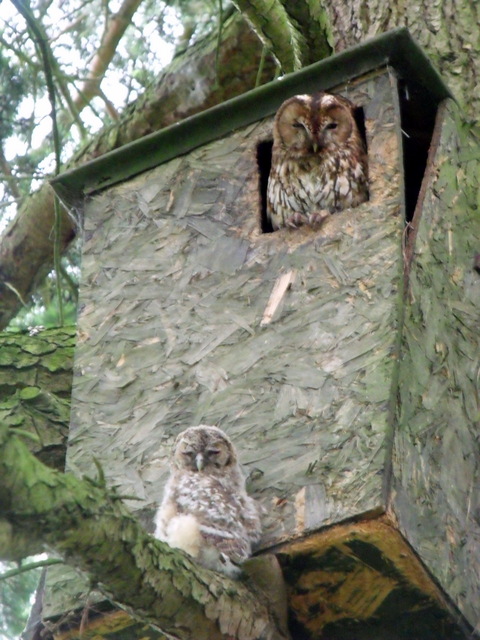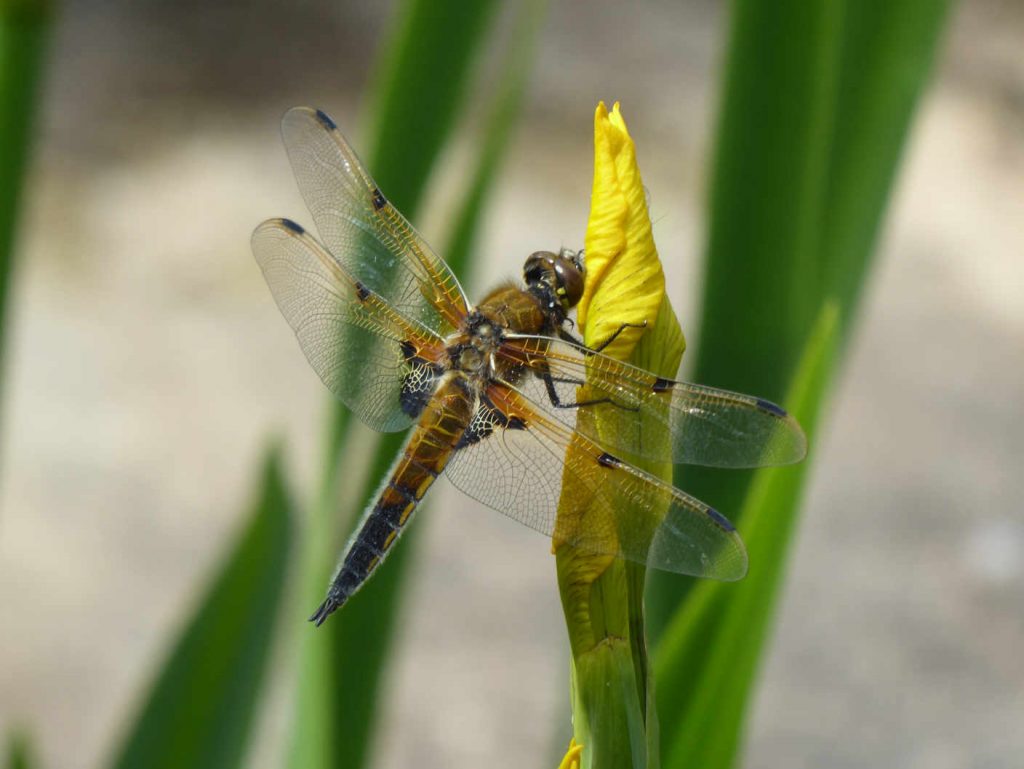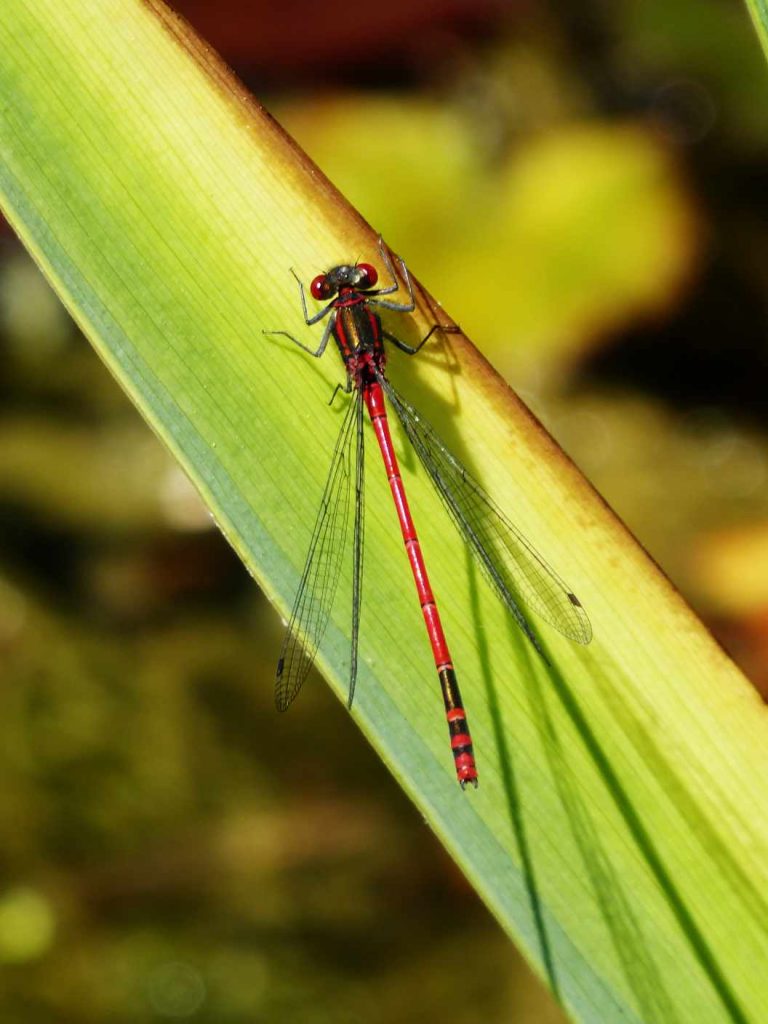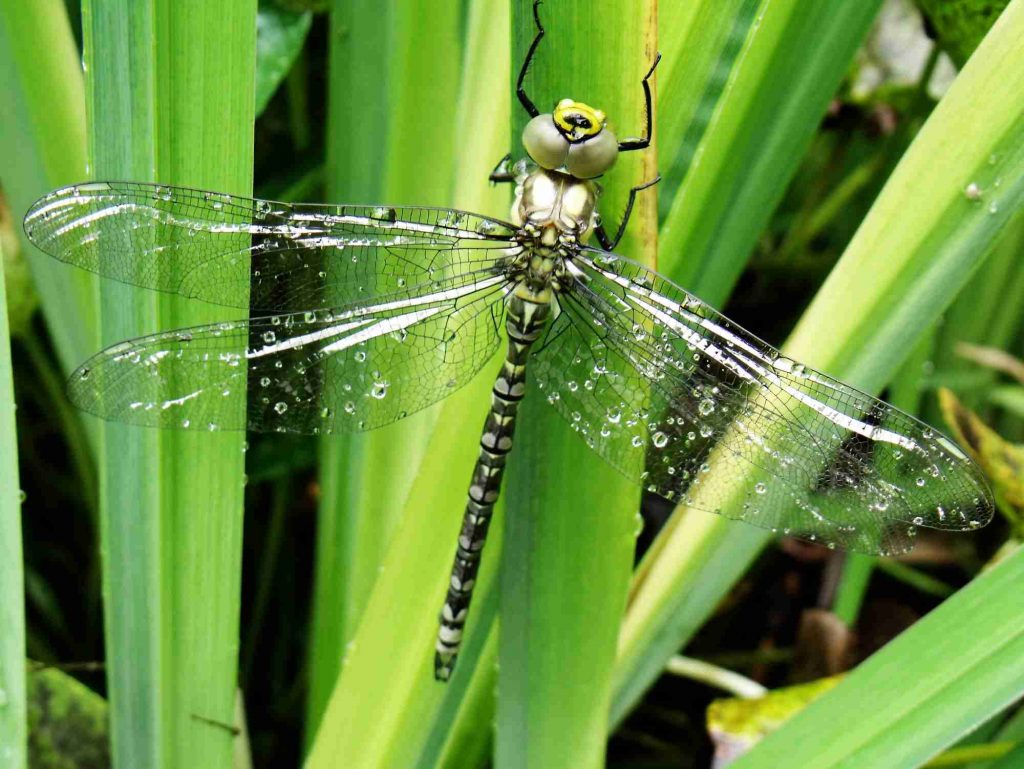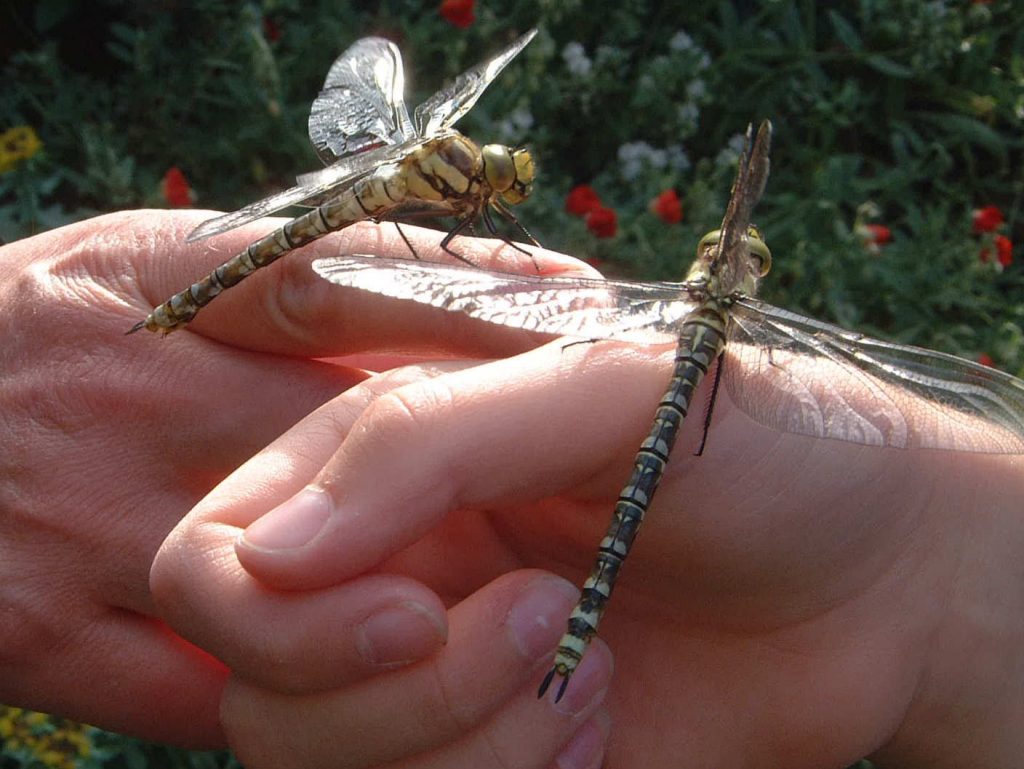Tawny tots
We get a handful of owlets in our boxes every year. They fledge in late May and disperse into the village churchyard or nearby gardens. Owlets look like fluffy daleks – who knew?
We’ve had tawny owls using our boxes for many years. We have two boxes but tawnies are fiercely territorial so only one is nested in. The other is used, but for roosting. Other birds hate the owls and chit warnings at them or mob them.
Main picture shows the first of the 2017 tots. They look helpless but are astonishing mobile.
Dispersal is a survival strategy but we can hear them for 5-6 weeks afterwards, at night, calling to be fed.
Our pond is full of dragonfly and damselfly larva. Voracious predators, they zip around the pond like small spaceships.
Our most common dragonfly is the Southern Hawker. In 2019 we collected all the empty larval husks from around the pond for an art project (don’t ask!). We ended up with over 60.
We get many species of Damselfly but it’s hard to identify them all: certainly the Blue and the Blue-tailed.
October Wildlife Post:
Sparrowhawk
USUALLY we get a split-second warning: there’s a mad panic, goldfinches and tits exploding in every direction, as a claws-first shadow arrives.
Our regular sparrowhawk is a male, so two thirds the size of the females we sometimes get, and slate grey – rather than brown – wings and back. We often see it barrelling around the house at head height, turning tight corners and taking advantage of every scrap of cover.
‘Dammit’
It’s attacking our feeding station, 40cms from the study window, about once a week.
Usually everything gets away and the disgruntled sparrowhawk perches on top of the feeder with a ‘dammit’ expression on its beak. But in October it caught a tardy goldfinch and we had the dubious pleasure of watching it on our gravel triumphantly plucking out feathers for five minutes.
We persuade ourselves that our sunflower hearts and peanuts support an artificially high population of birds, and this is nature’s way of balancing things up. It’s part of the constant garden drama that we’re lucky to share in.
September Wildlife Post:
Owls verses Jackdaws
IF YOU’RE wondering why 30 jackdaws are going crazy around a particular tree, screeching up a racket from the branches and flying widdershins around it as if they can’t tear themselves away…
Chances are the reason is an owl. It’s hunkered down for a quiet daytime roost after a hard-night’s hunting, only to find that word has gone out on Beak-Book (or whatever crows use as social media) and the locals have arrived to ask it to move on.
Dramatic skirmishes
We’ve had some dramatic skirmishes between our resident tawny owls and the village jackdaws this year.
This September a lime-tree on the village green was alive with dark shapes and raucous jackdaws. We naturally wondered if our owl was at the centre of the commotion.
An hour later she’d had enough. We were in our back garden when we heard the approaching pandemonium. Seconds later our owl burst from behind the house and within a handful of wingbeats was at her owlbox.
Phenomenal timing
Talons outstretched, wings folded and at full pelt she was inside. A mob of jackdaws on her tail-feathers. She looks so massive in flight it must take phenomenal timing to squeeze inside a 12-15cm diameter hole at speed.
The jackdaws are still chuckling about it.
May Wildlife Post:
Nuzzling newts
WE TRAIN newts. Actually, Cath is the only one with the patience to persuade newts to swim up and nuzzle her fingers.
Our village is blessed with lots of newts and we get all three UK species breeding in our pond. Doubtless newt-luring is an ancient country craft, once as revered as pickle making or vole-wrangling. It probably fell out of popularity due to the high likelihood of its practitioners being burned as witches – don’t tell Cath.
Dinosaur leopards
We’re not sure when she first developed her ability to beguile newts but suspect that the odd wire-worm may have been involved in the early days.
Getting up-and-personal with newts, you get to know about them. Pictured with Cath’s finger is a smooth (aka common) newt – they vary a lot in colouration but classically look like little dinosaur leopards.
Newt conga
The males get crests as well as extra spotty during the long mating season. Sometimes lines of four-or-five sexually aroused newts form a conga. Now we’re wondering if Cath trained them to do that…
The best recipe for owlets
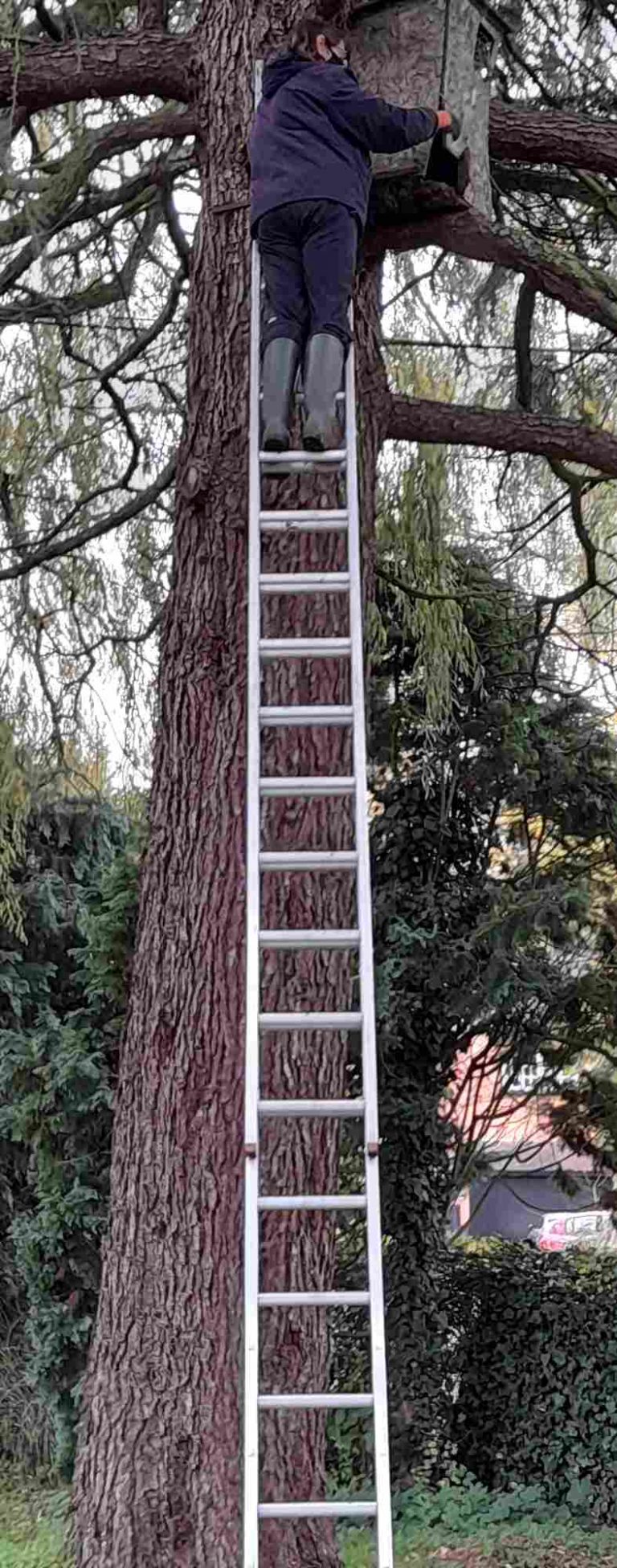
November is owl box clear out month, so we’ve removed a huge pile of debris – but left enough litter to ensure it’s still usable.
We had an owl box long before we had owls.
The box was popular and well used. One year, four baby squirrel heads mustered in the opening. Jackdaws, wood pigeons, and stock doves took it in turns to nest there, but no owls. This, despite barn owls and little owls flying in the fields around us and tawnies visiting most nights.
One day, after about five years, all that changed. A female tawny stared at us from the entrance to the nest box. That May we had our first brood of owlets.
What had changed?
The vital ingredient necessary for owls had been added to our box – a twiggy soiled mess. The previous residents had brought in nesting material and all the inevitable detritus that comes with raising kids had accumulated. Owls don’t do nesting material, they rely on others to create a woody litter, then take it over.
We’ve had owlets every year since.
When we got a new box two years ago, we had the recipe: two shovelfuls of dry soil and an armful of dried twigs and leaves. It worked: a tawny owl immediately took up residence as a roost and duly bred in it. She is still with us but swaps between the old and new box.
Recently, we saw squirrels biting off sprays of willow and stuffing them into the old box. If it fills up too high owlets can drop out. It was time to ladder-up…

